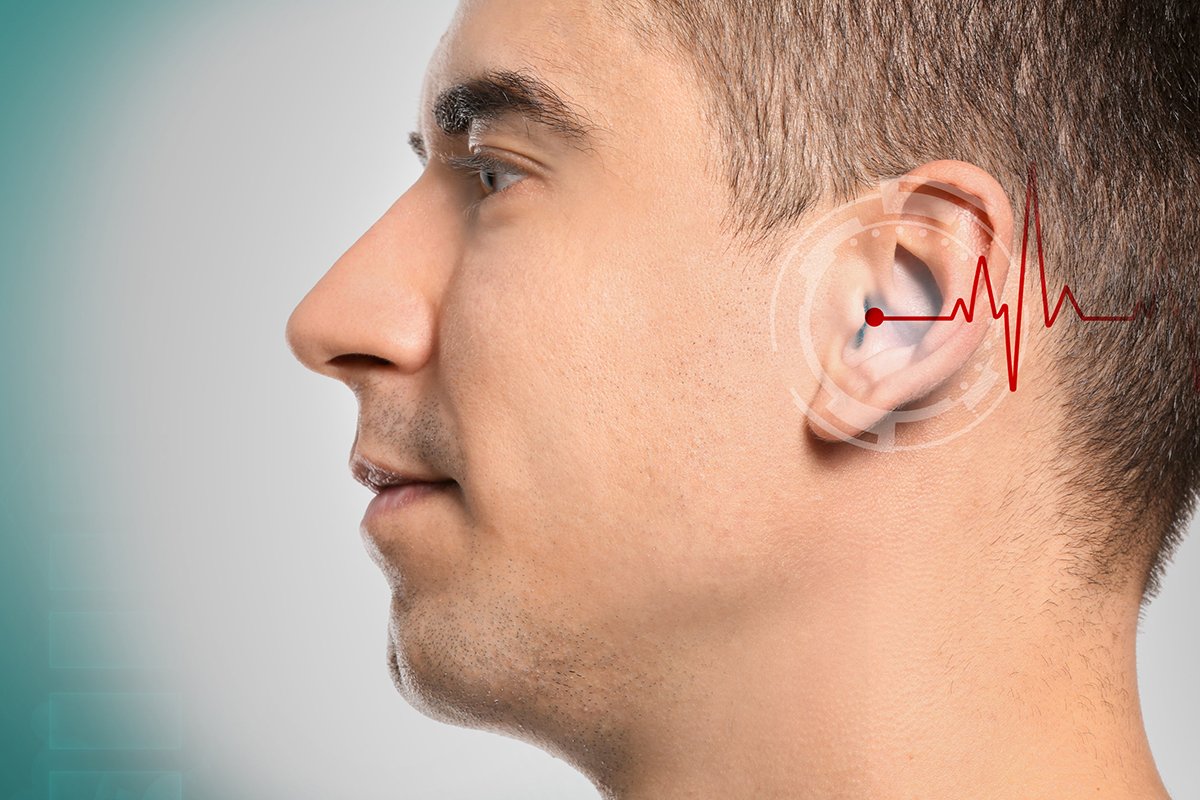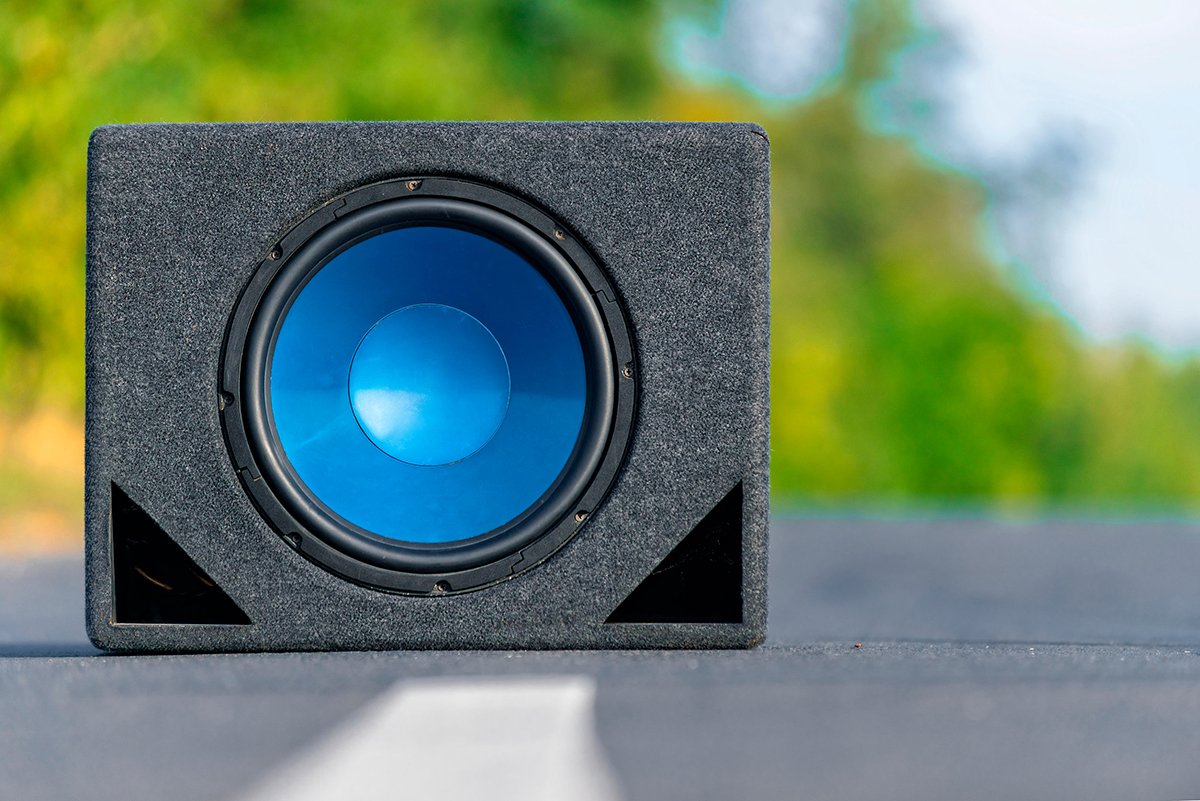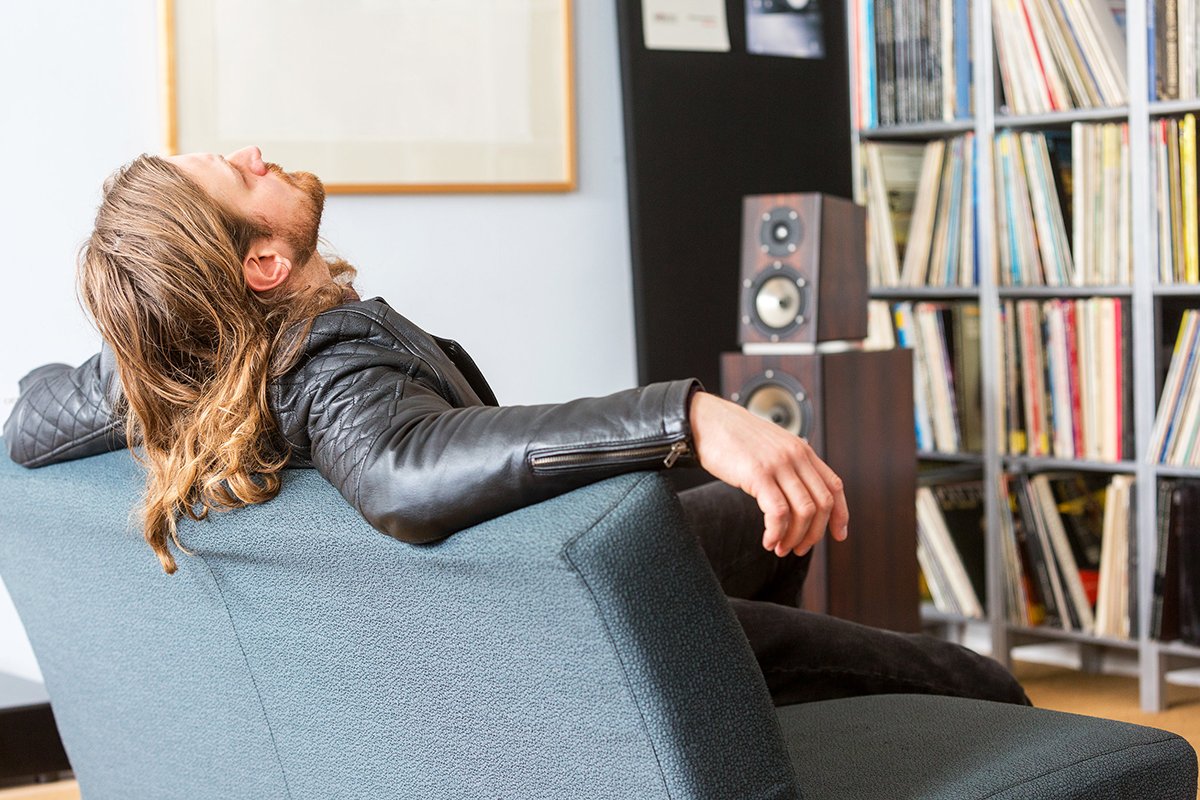Every sound has a corresponding frequency which determines its pitch or tonal quality. Subwoofers can reproduce low-frequency sounds that conventional speakers find difficult to replicate, making them a popular addition to any sound system.
Subwoofers can damage your hearing when played at loud volumes. The sound a subwoofer makes is less strainful on our ears, so there’s a greater tendency for us to subject ourselves to high volume levels, which could cause significant ear damage.
This article will explain how subwoofers work in more detail and how hearing loss happens. By the end, you’ll get a better understanding of the role subwoofers can play in damaging your ears. We’ll also discuss different ways to safeguard your ears and what safety features you have at hand.
Page Contents
How Subwoofers Can Damage Your Hearing
As stated earlier, subwoofers generate low-frequency sounds, otherwise known as bass. These low-frequency sounds don’t cause much ear fatigue since we feel this more than hear it.
The human ear can detect sounds between 20-20000 Hz, but it’s most sensitive to sounds within 2000-5000 Hz. Our sensitivity to those frequencies explains why we cringe when someone runs their nails across a blackboard.

Since bass is generally not unpleasant to our ears, there’s a greater risk of prolonged exposure to intense levels of sounds produced by subwoofers. These low-frequency sounds may not seem loud but can still cause damage to our hearing.
Any sound above 85 dB is considered dangerous to our ears and may be harmful to hearing. Most subwoofers can produce sound pressure that’s a lot louder than what is safe to hear.
How much damage our hearing suffers depends on how loud the sound is, how close we are to the source, and how long we expose ourselves to the noise. Let’s take a closer look at what it is about subwoofers that can damage your hearing.
Loudness
Every sound consists of two attributes; loudness and pitch. It’s essential to know the difference between them, as subwoofers can be loud despite their low pitch.
Loudness is essentially the intensity of the sound, which depends on the amplitude of the sound waves.
Sound intensity is measured with a unit called decibels (dB). To put things into perspective below is a table that shows a typical dB rating for everyday sounds:
| Sound | Loudness |
| Breathing | 10dB |
| Birds Chirping | 15dB |
| Normal Conversation | 60dB |
| Busy Traffic | 70dB |
| Phone Ringing | 80dB |
(Readings will vary depending on the distance from the source of the sound)
On the other hand, pitch is the tone or frequency of sound, which we measure in Hertz (Hz).
In a nutshell, loudness pertains to the energy sound makes, while pitch refers to its tonal quality. Between these two sound attributes, only loudness can directly impact hearing loss.
The louder or more intense a sound gets, the more prone it is to cause damage. In the context of subwoofers, most of them can easily breach the safe listening threshold of 85 dB.
Even subwoofers with relatively conservative power ratings such as 100 watts can produce sounds above 100 dB. Hence, it’s crucial to take caution when turning up the volume.
To help you find out how loud your speakers can get, Mehlau.net has an SPL calculator.
Distance
Another factor that affects hearing loss is the distance between your ears and the sound source. The potential damage a sound may cause to your ears is reduced as you move farther away from its point of origin.
No matter how loud sound or music may be, their vibrations and sound waves dissipate as they travel away from the source, and this explains why headphones can cause just as much damage to your hearing as a significantly louder speaker.
The placement of your subwoofer will determine its distance from you and how loud it sounds. A subwoofer usually sounds louder when placed in the corner of a room because its soundwaves reflect off the surrounding walls.
Time
The amount of time you expose yourself to loud sounds can critically impact your hearing. You may think that listening to music at 90 dB for five minutes is harmless, but doing it daily can cause damage because. Your exposure to blaring sounds doesn’t simply reset.
Increasing your exposure to noise also increases the risks of harm. Note that the louder the sound is, the less time it’ll take to damage your ears.
Hearing a loud explosion at 120 dB can be just as bad as listening to music at 90 dB for hours each day.
It’s essential to be conscious of how much time you use your subwoofers since most can produce sounds between 100-130 dB. Listening to music at 115 dB for 15 minutes can already cause damage.
How Hearing Loss Occurs
We have around 16,000 hair cells in our cochlea or inner ear, which are responsible for detecting sound by converting sound vibrations to electrical signals sent to our brain. Louder sounds produce more vibrations, and these vibrations cause the hair cells within our ears to move around more, causing them to become overworked and damaged.

Some hair cells can repair themselves after a recovery period. Still, prolonged exposure to noise or even a short burst of a loud sound can damage them beyond repair, which explains why hearing loss can either be temporary or permanent.
Signs of damaged hair cells include difficulty hearing soft sounds and high-pitched frequencies. It can come in the form of ringing in the ears. According to the Centers for Disease Control and Prevention, it takes around 30-50% of our hair cells to be damaged before we experience a noticeable decline in hearing.
Loud noise can also damage our auditory nerves, which transmit electrical signals to our brains. In any case, researchers suspect damage to hair cells and auditory nerves can lead to more severe issues such as auditory neuropathy, which is a form of neural or nerve deafness.
How Bad the Problem Is
It may seem as if listening to loud music isn’t as harmful as it looks. Many people listen to loud music, not to mention musicians who have significant exposure to it. However, this couldn’t be further from the truth. In fact, the numbers are alarming.
According to the World Health Organization, 50% of people between 12-35 years old risk hearing loss due to prolonged or excessive exposure to blaring sounds. These numbers are pretty staggering for such a young age group, given that hearing loss is also often attributed to aging.
As it stands, 5% of the world’s population has a debilitating form of hearing loss. Studies project this number will continue to grow and reach 10% by 2050.
In the United States alone, the number of teenagers who are losing their sense of hearing increased from 3.5% in 1994 to 5.3% in 2006.
Although we can attribute the above-mentioned numbers to exposure to loud sounds from various sources such as clubs, concerts, and listening devices, there’s no denying the potential hearing damage subwoofers can cause.
How To Protect Yourself
The best way to preserve your hearing is to avoid loud noise or prolonged exposure to it. However, that doesn’t mean you have to give up your subwoofer. Several tools and safety precautions will allow you to use your subwoofers without it harming your ears.
Learn To Appreciate Audio Quality Over Sheer Loudness
The best way to enjoy your subwoofers without causing your ears any harm is to keep the volume down. Keeping the volume down may seem ironic or counterintuitive, given that many people use subwoofers to make their audio system louder.

Fortunately, a pleasant listening experience doesn’t have to rely on excessive loudness. There are many attributes of audio that’ll allow you to enjoy your subwoofers at a safe volume.
According to cnet.com, the objective standards that define sound quality are low distortion, wide frequency response, and an uninhibited dynamic range.
- Low Distortion: Low distortion is the ability of audio equipment to reproduce sounds accurately or as close as possible to the recording.
- Wide Frequency Response: A comprehensive frequency response means that the audio system can reproduce a wide range of musical tones. As mentioned earlier, subwoofers enhance the frequency range because they can reproduce low frequencies better than conventional speakers.
- Uninhibited Dynamic Range: An uninhibited dynamic range means that the softest to the loudest sounds during playback all sound natural.
A delightful listening experience doesn’t have to involve keeping your neighbors up. You might be able to enjoy your music even more by learning to appreciate quality over intensity.
Keep a Safe Distance
Earlier, we established that your distance from the sound source could play a huge role in damaging your hearing. Sound intensity decreases the farther you move away from it. Hence, it’s a good idea to keep a safe distance from your speakers, particularly your subwoofers, when listening to music.

The Inverse Square Law applies to how distance relates to sound intensity. Doubling your space away from the sound source reduces the sound’s intensity by 6 dB.
So, if you are seated 3 meters (9.84 ft) away from your speakers, listening to music at 90 dB, moving 6 meters (19.69 ft) away from your speakers reduces the sound’s intensity to 84 dB.
You can use the calculator on wkcgroup.com to determine a safe distance from your speakers. Please note that this computation considers an ideal environment, where no components in the room can cause sound reflections.
Limit Your Exposure
Another way to reduce the risk of hearing damage is to limit your exposure to blaring sounds. Our ears may be sensitive to noise, but you’ll find that they hold reasonable thresholds in terms of how long they can be exposed to sound before any damage occurs.
Below is a table that shows the maximum job-noise exposure (without ear protection) allowed by law:
| Loudness | Maximum Allowable Daily Exposure |
| 90 dB | 8 hours |
| 95 dB | 4 hours |
| 100 dB | 2 hours |
| 105 dB | 1 hour |
| 110 dB | 30 minutes |
| 115 dB | 15 minutes |
It’s also essential to read and understand the warning labels and precautions that speaker manufacturers publish. You can find safety information in the owner’s manual or on the packaging of the speakers.
Safety Features That Help You Prevent Hearing Damage
Self-preservation may not always be on top of your mind when you’re listening to music or watching a movie with your subwoofers are cranking out the bass. Fortunately, many types of audio equipment now come with safety features, and some devices will help you prevent hearing loss.
dB Meter
Some devices show the average dB reading depending on your volume settings. Specific models will even warn you if you happen to exceed the safe listening threshold of 85 dB.
If your audio system doesn’t come with a dB meter, there are quite a number of them to choose from, should you decide to buy one separately. The Reed Instruments Sound Level Meter is highly recommended by thanks to its accurate readings.
Sound Allowance Software
Some devices can monitor the loudness and amount of time you spend listening to music. These devices allow you to limit your exposure based on your chosen parameters.
You can also set maximum volume limits to your device and parental controls for your children to prevent hearing damage due to excessive loudness.
Ear Plugs
Some earplugs filter out the noise without compromising sound quality or the listening experience. Most of these earplugs are for use in concerts, but they will work fine if you want to feel the bass without causing damage to your ears.
However, if you’re cranking up your music to the point of needing earplugs, you should definitely turn the volume down.
Final Thoughts
Hearing loss is a problem that continues to grow and is affecting more and more young people. Subwoofers are extremely capable of producing sounds that are loud enough to cause irreparable hearing damage.
You can prevent much hearing damage simply by using subwoofers in moderation. Limiting volume levels and controlling the amount of time you spend listening to music can do wonders to safeguard your hearing.
The best part is we can protect ourselves without having to give anything up, and music can still be enjoyable without the need for excessive loudness.

